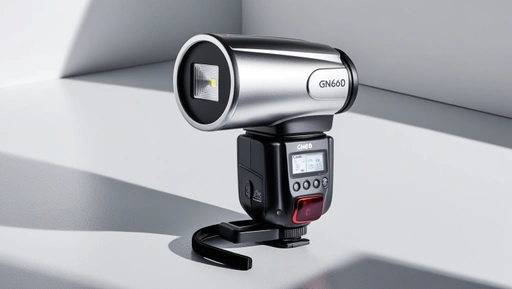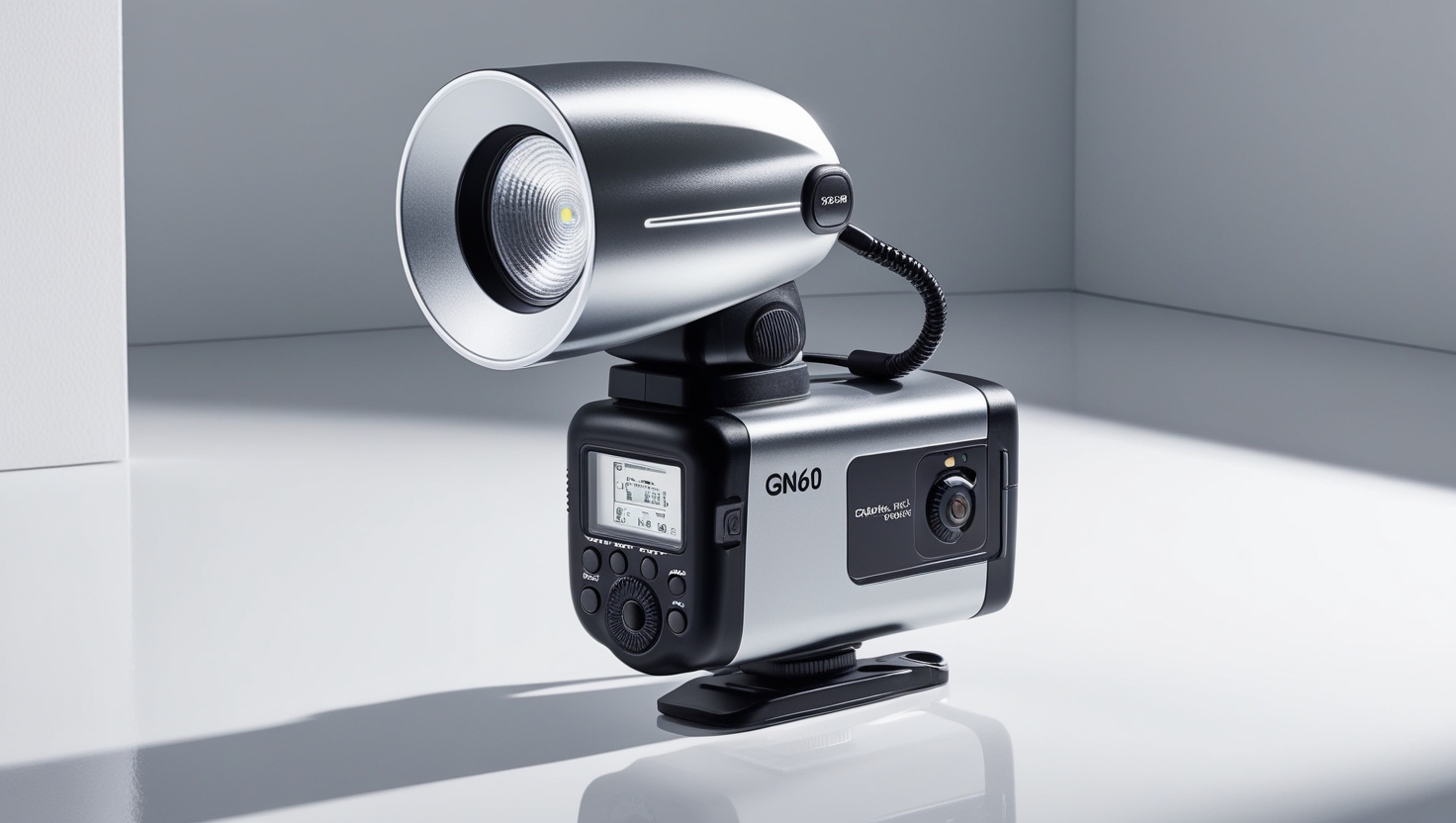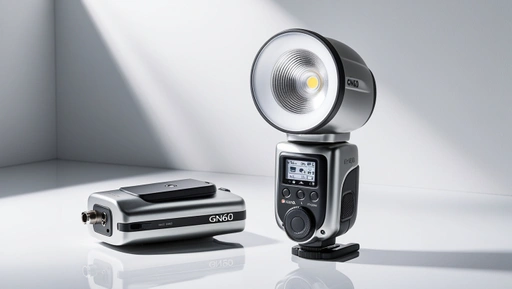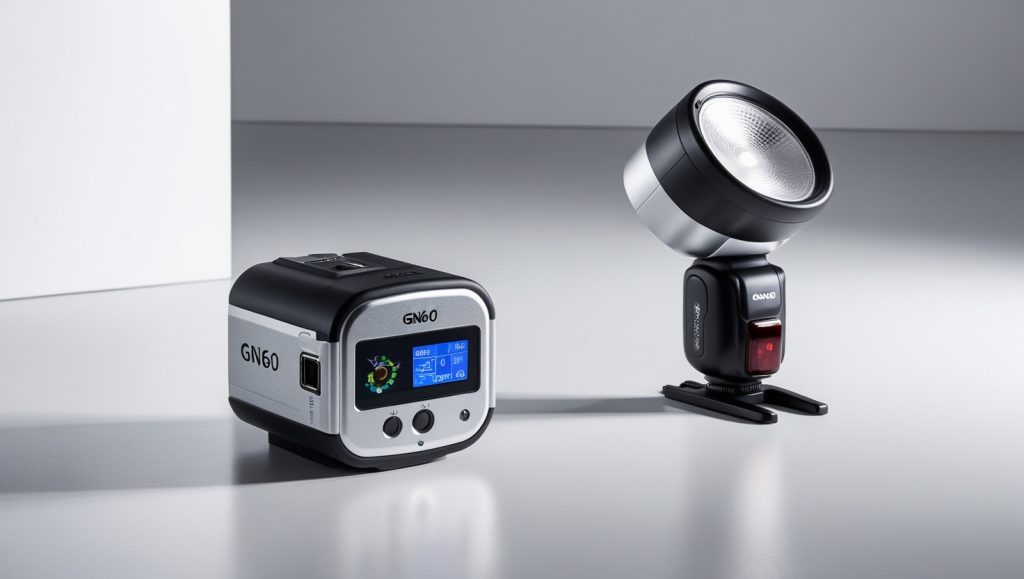NEWS
Radio-controlled external flash GN60
Radio-Controlled External Flash GN60: An In-Depth Review
Introduction
In the world of photography, lighting plays a crucial role in determining the quality and mood of an image. Whether you’re a professional photographer or an enthusiast, understanding how to manipulate light can significantly enhance your work. Among the various lighting equipment available, the radio-controlled external flash GN60 has emerged as a preferred choice for many. This article delves deep into the features, specifications, and advantages of the GN60, as well as practical tips for using it effectively in various photographic scenarios.
1. What is a Radio-Controlled External Flash?
A radio-controlled external flash is a powerful lighting tool that provides additional illumination to enhance photographs. Unlike built-in camera flashes, external flashes can be mounted off-camera and adjusted remotely, offering greater flexibility in positioning and lighting angles. The GN60 refers to the guide number (GN) of the flash, which indicates its maximum output power. A higher GN number means a more powerful flash capable of illuminating subjects at greater distances.
2. Understanding the Guide Number (GN)

The guide number is a critical specification for any flash unit. It quantifies the flash’s power and effectiveness in illuminating a subject. The formula for calculating the effective distance for proper exposure is as follows:
Distance (meters)=GNAperture (f-stop)\text{Distance (meters)} = \frac{\text{GN}}{\text{Aperture (f-stop)}}
For instance, if the GN of a flash is 60, and you’re shooting at an aperture of f/4, the effective distance is:
Distance=604=15 meters\text{Distance} = \frac{60}{4} = 15 \text{ meters}
This means that the flash can effectively illuminate subjects up to 15 meters away at this aperture setting.
3. Key Features of the GN60 Flash
3.1 Powerful Output
With a guide number of 60, the GN60 external flash offers exceptional output, making it suitable for a wide range of shooting scenarios, from portraits to events and outdoor photography.
3.2 Radio-Controlled Technology
One of the standout features of the GN60 is its radio-controlled capability. This allows photographers to trigger the flash remotely using compatible triggers or cameras. The radio signal provides more reliable triggering over longer distances compared to infrared systems, which require line-of-sight.
3.3 Versatile Flash Modes
The GN60 supports various flash modes, including:
- E-TTL / i-TTL: Automatic flash exposure control for Canon and Nikon cameras, respectively.
- Manual Mode: Allows users to set the flash output manually, providing full control over lighting.
- Multi-Flash Mode: Enables stroboscopic effects, where multiple flashes are fired in quick succession, ideal for capturing fast action.
3.4 Tilt and Swivel Head
The adjustable head can be tilted and swiveled, allowing for creative lighting techniques such as bounce flash, which softens shadows and reduces harsh lighting.
3.5 Quick Recycling Time
The GN60 features a fast recycling time, typically around 2 seconds, ensuring you won’t miss crucial moments while waiting for the flash to recharge.
3.6 Built-In Diffuser and Reflector
The flash comes with built-in accessories such as a diffuser and reflector, enabling photographers to modify the light and achieve various effects without additional gear.
4. Specifications of the GN60 Flash
| Specification | Details |
|---|---|
| Guide Number | GN60 |
| Flash Modes | E-TTL, Manual, Multi-Flash |
| Wireless Range | Up to 100 meters |
| Recycling Time | Approximately 2 seconds |
| Power Source | Rechargeable battery |
| Weight | Approximately 500 grams |
| Dimensions | 200 x 100 x 70 mm |
| Compatibility | Canon, Nikon, Sony, and more |
5. Advantages of Using the GN60 Flash

5.1 Enhanced Control Over Lighting
The GN60 allows for off-camera usage, giving photographers greater control over lighting placement. This flexibility is essential for creating mood and dimension in images.
5.2 Consistent Performance
The radio-controlled technology ensures consistent performance, reducing the risk of misfires commonly associated with infrared flashes, particularly in bright or outdoor settings.
5.3 Versatility Across Genres
From weddings to product photography, the GN60’s powerful output and adjustable settings make it versatile enough to handle various genres, ensuring it can meet different lighting needs.
5.4 Cost-Effective Solution
Compared to higher-end studio lights, the GN60 offers professional-grade lighting capabilities at a more affordable price point, making it accessible for aspiring photographers.
6. Practical Applications of the GN60 Flash
6.1 Portrait Photography
In portrait photography, achieving flattering lighting is crucial. The GN60 can be positioned at various angles to create soft, diffused light that enhances facial features and minimizes harsh shadows.
6.2 Event and Wedding Photography
During events, moments can unfold quickly. The fast recycling time and reliable radio control of the GN60 allow photographers to capture fleeting moments without interruptions.
6.3 Product Photography
For product photography, consistent lighting is essential. The GN60 can be used to create controlled lighting setups, ensuring that products are illuminated evenly and attractively.
6.4 Outdoor Photography
When shooting outdoors, natural light can be unpredictable. The GN60 provides the additional power needed to illuminate subjects in bright sunlight or shaded areas.
7. How to Use the GN60 Flash Effectively
7.1 Understanding Exposure
When using the GN60, it’s vital to understand how flash affects exposure. Adjust your camera settings based on the flash output and ambient light to achieve the desired exposure.
7.2 Positioning the Flash
Experiment with different positions for the flash. Directly facing the subject can create harsh lighting, while bouncing the flash off a ceiling or wall can produce softer, more flattering light.
7.3 Using Light Modifiers
Consider using external modifiers like softboxes or umbrellas to soften the flash output. These modifiers help diffuse the light, creating a more natural look.
7.4 Sync Speed Considerations
Be mindful of your camera’s sync speed, which is the fastest shutter speed that can be used with flash. Exceeding this speed can result in partially exposed images.
8. Comparing GN60 with Other Flash Units
To understand the GN60’s position in the market, it’s essential to compare it with other popular external flashes.
8.1 Canon Speedlite 600EX II-RT
- Guide Number: GN60
- Radio Control: Yes, with improved range
- Recycling Time: 0.1 – 5.5 seconds
- Weight: Heavier than GN60
Comparison: While both units have a similar guide number, the Canon Speedlite offers advanced features like built-in LED modeling lights but comes at a higher price point.
8.2 Godox V1
- Guide Number: GN92
- Radio Control: Yes, 2.4GHz wireless transmission
- Recycling Time: Approximately 1.5 seconds
- Weight: Similar to GN60
Comparison: The Godox V1 has a higher guide number and unique round head design, providing softer light. However, the GN60 is more versatile for general use.
8.3 Nikon SB-5000
- Guide Number: GN58
- Radio Control: Yes, with built-in radio transceiver
- Recycling Time: 2.5 seconds
- Weight: Heavier than GN60
Comparison: The SB-5000 is compatible with Nikon’s advanced wireless systems, making it a preferred choice for Nikon users, but it lacks the GN60’s more robust output.
9. Frequently Asked Questions (FAQs)
9.1 Is the GN60 compatible with all camera brands?
The GN60 is compatible with various brands, including Canon, Nikon, and Sony, but it’s essential to check for specific compatibility before purchasing.
9.2 Can I use the GN60 for videography?
Yes, the GN60 can be used for videography, especially in controlled environments. However, consider continuous lighting solutions for professional video work.
9.3 How long does the battery last?
Battery life varies based on usage, but with standard usage, the GN60 can last several sessions before needing a recharge.
9.4 What accessories should I consider?
Accessories like softboxes, reflectors, and diffusers can enhance the GN60’s performance, allowing for more creative lighting setups.
10. Conclusion
The Radio-Controlled External Flash GN60 stands out as a powerful and versatile tool for photographers seeking to enhance their lighting capabilities. With its impressive guide number, radio-controlled functionality, and adaptability across various photography genres, it offers excellent value for both professional and amateur photographers.
Understanding how to effectively use the GN60, alongside practical tips and comparisons with other flash units, can help photographers achieve stunning results in their work. As lighting is fundamental to photography, investing in a reliable external flash like the GN60 can elevate your creative pursuits and improve the quality of your images.
11. References
- Manufacturer’s Guide on GN60
- Photography Magazine: Understanding Guide Numbers
- Camera Review: External Flash Comparisons
- [Photography Community
-
12. Advanced Techniques with the GN60 Flash
To fully harness the potential of the GN60 external flash, photographers can employ several advanced techniques. These methods enhance creative possibilities and improve lighting quality for various shooting conditions.
12.1 Off-Camera Flash Techniques
Using the GN60 off-camera allows for greater creativity in lighting setups. Here are some popular off-camera flash techniques:
12.1.1 Rembrandt Lighting
Rembrandt lighting is a classic portrait lighting technique that creates a triangle of light on the subject’s cheek, named after the artist Rembrandt. To achieve this effect with the GN60:
- Position the flash at a 45-degree angle to the subject.
- Elevate the flash slightly above the subject’s eye level.
- Adjust the power output to create a soft shadow on the opposite cheek, ensuring the triangle of light is visible.
12.1.2 High-Speed Sync (HSS)
High-Speed Sync allows you to use flash at shutter speeds higher than the camera’s sync speed, enabling you to shoot in bright conditions while maintaining a shallow depth of field. To use HSS with the GN60:
- Enable HSS on your camera and GN60 flash.
- Set your desired aperture and increase the shutter speed beyond the sync speed.
- Take test shots to adjust the flash power and achieve the desired exposure.
12.2 Balancing Ambient Light and Flash
Balancing ambient light with flash can create a natural look in your photographs. Here’s how to do it with the GN60:
- Meter the Ambient Light: Use your camera to measure the ambient light exposure. Set your ISO and aperture according to the ambient light conditions.
- Set the Flash Power: Adjust the GN60’s power output to complement the ambient light. Start with a lower power setting and increase it gradually.
- Take Test Shots: Take several test shots to evaluate the balance. Look for a natural blend of flash and ambient light in your images.
12.3 Creative Flash Techniques
12.3.1 Bounce Flash
Bouncing the flash off walls or ceilings can soften shadows and create a more flattering light. To do this:
- Identify Bounce Surfaces: Look for light-colored surfaces to bounce off, as they will diffuse the light better.
- Adjust Flash Angle: Tilt the GN60 head to point at the bounce surface, rather than directly at the subject.
- Experiment with Angles: Adjust the angle and distance to achieve different effects.
12.3.2 Colored Gels
Adding colored gels to the GN60 flash can dramatically change the mood and tone of your images. To use gels:
- Choose Your Gels: Select gels that match your desired effect (e.g., warming for sunset shots or cool tones for night scenes).
- Secure the Gel: Attach the gel to the front of the flash using a filter holder or tape.
- Adjust White Balance: Change your camera’s white balance to match the gel for accurate color reproduction.
12.4 Utilizing the GN60 for Event Photography


In event photography, quick adjustments and reliable performance are crucial. Here are tips for effectively using the GN60 during events:
12.4.1 Prepare for Low Light
Events often have varying lighting conditions. To be prepared:
- Set Up Your Camera: Use a higher ISO and a wider aperture to capture ambient light.
- Use the GN60 in E-TTL Mode: This allows the flash to adjust automatically to changing lighting conditions, providing consistent exposure.
12.4.2 Candid Shots
Candid photography benefits from discreet lighting. To capture moments without being intrusive:
- Use the Flash in TTL Mode: This will help balance the ambient light while providing necessary flash illumination.
- Position the Flash to Avoid Direct Eye Contact: Bounce or diffuse the light to create softer shadows, making the lighting appear more natural.
13. Maintenance and Care for the GN60 Flash
Proper maintenance of the GN60 external flash is essential for longevity and consistent performance. Here are some best practices for care:
13.1 Regular Cleaning
- Wipe the Body: Use a microfiber cloth to remove dust and fingerprints from the flash body.
- Clean the Contacts: Periodically clean the hot shoe and contact points with a soft, dry cloth to ensure a good connection with the camera.
13.2 Battery Care
- Use Quality Batteries: Always use high-quality rechargeable batteries to avoid performance issues.
- Store Properly: If not in use for an extended period, remove the batteries to prevent leakage and corrosion.
13.3 Firmware Updates
Check the manufacturer’s website for any firmware updates for the GN60. Updating the firmware can fix bugs, improve performance, and add new features.
14. Real-World Examples: Success Stories with the GN60
14.1 Wedding Photography
Many wedding photographers have integrated the GN60 into their toolkit due to its reliability and power. One photographer shared that during a wedding reception, the venue’s ambient light was inadequate for capturing dance moments. By using the GN60 off-camera and bouncing it off the ceiling, they were able to capture vibrant images of the couple dancing, resulting in beautifully lit photographs that truly reflected the joyous atmosphere of the event.
14.2 Product Photography
A product photographer utilized the GN60 for an e-commerce shoot. By placing the flash at an angle to bounce light off a white umbrella, they achieved soft and even lighting on the product, reducing harsh shadows and highlighting textures. This setup not only improved the quality of the images but also expedited the shooting process.
15. Conclusion
The Radio-Controlled External Flash GN60 is an invaluable tool for photographers seeking to elevate their lighting capabilities. With its powerful output, radio-controlled functionality, and versatile features, it offers numerous creative opportunities for capturing stunning images.
By mastering advanced techniques and understanding how to balance ambient light with flash, photographers can push their creative boundaries and produce remarkable results. Whether shooting portraits, events, or products, the GN60 stands out as a reliable partner in achieving exceptional lighting.
As technology continues to advance, staying updated on the latest trends and techniques in flash photography will help photographers make the most of their equipment. The GN60 is not just a flash; it is a gateway to creative expression in the world of photography.
16. Additional Resources
- Photography Lighting Techniques eBook
- Online Flash Photography Workshops
- Forums and Communities for Photographers
17. Final Thoughts
In the evolving landscape of photography, investing in quality equipment like the GN60 external flash can significantly impact your creative journey. Explore the endless possibilities it offers, experiment with different techniques, and don’t hesitate to share your experiences with the photography community. Together, we can continue to push the boundaries of visual storytelling.



